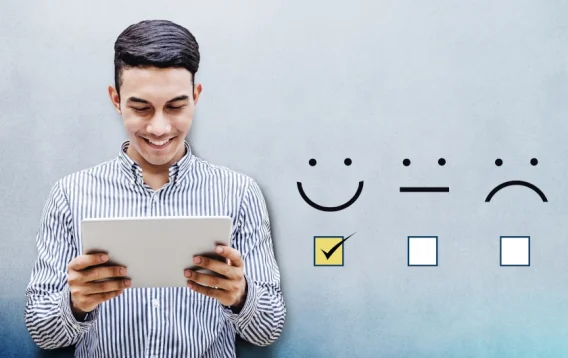The in-store payment relates to the speed of the check-out process and the wait linked to this process. In a high competitive market, retailers attach more and more value to the experience they provide customers in stores. For the professionals, a seamless journey, without wait, is a method of differentiation from the competitors. That is when the new means of payment come into action to improve the wait and free the check-out process from the waiting line.
From the contactless payment with a credit card to a cashierless store, here is a review of the last innovations in payment.
Contactless
Appeared in France in 2012, the contactless payment spreads quickly thanks to the credit card. The system works with the NFC technology (Near Field Communication) that allows the communication between the mean of payment and the terminal when they are nearby through short radio waves. In 2016, 600 million of transactions had been completed with the contactless technology.
The credit card is just the beginning, the NFC as mean of payment can be expanded to other devices and specifically smartphones. Now, the customers can pay in certain stores with a mobile app, often developed by a large IT company as Apple, Samsung or Paypal…
Mobile App
These applications want to make the payment with friends easier. Directly in the contact list, the user can exchange money by just sending an SMS.
The software publishers have extended the concept to allow user to pay with the app in the stores. The app generates a QRCode so the retailers scan it to validate the payment. The main problem with this solution is that the professional4 must use a QRCode scanner in addition to his usual payment terminal.
These apps include for example PayByPhone that enable to pay at the parking meters or S-Money to pay at the school cafeteria.
Biometrics
Biometrics is a broad subject that, sometimes, gets more of a science fiction fantasy than reality. For now, two ways of use are available: for the payment validation or for payment strictly speaking.
Web sellers are fond of this innovation. So, the giant Alibaba recently bought a start-up named EyeVerify. It develops a solution based on iris-recognition in the security domain. Now, on the Chinese online shop the customers can validate the transactions with an iris-recognition authentication.
Another example with the Bank of Cyprus that launched a credit card with a biometric sensor. The customer doesn’t need to enter a PIN code to validate the transaction, he just has to put his finger at the right place on the credit card.
In short, companies have found a way to make payment safer with the facial and iris recognition or with the fingerprint.
A step still remains for biometric technology to join reality and science fiction. Beyond payment validation, the human body would make the payment. When the customer opens a bank account, he leaves his biometrics footprint (voice, fingerprint…). To pay, he uses a scanner at the store. He doesn’t need a credit card or a smartphone!
Cashierless store
Mixing biometrics, mobile app and artificial intelligence (AI), Amazon launched a convenience store without cashier, named Amazon Go. Thanks to an app, the customer opens the store door. Cameras and AI identify which products the customer put in his cart. When he is done, he goes out without paying at the cashier and the amount of his purchases is debited on his Amazon account.
Obstacles in this cashierless process can appear for the customer or the retailer. Therefore, an alternative is possible with interactives kiosk installed in different corners of the store to offer a phygital journey: the customer buys on the online shop through the kiosk, pays and gets delivered.
Articles reliés
-

- News
- Retail
- Finance
Cross-Channel, a Must!
-

- News
- Finance
Finance: The New Customer Journey
-

- News
- ESII
The importance of satisfaction survey





